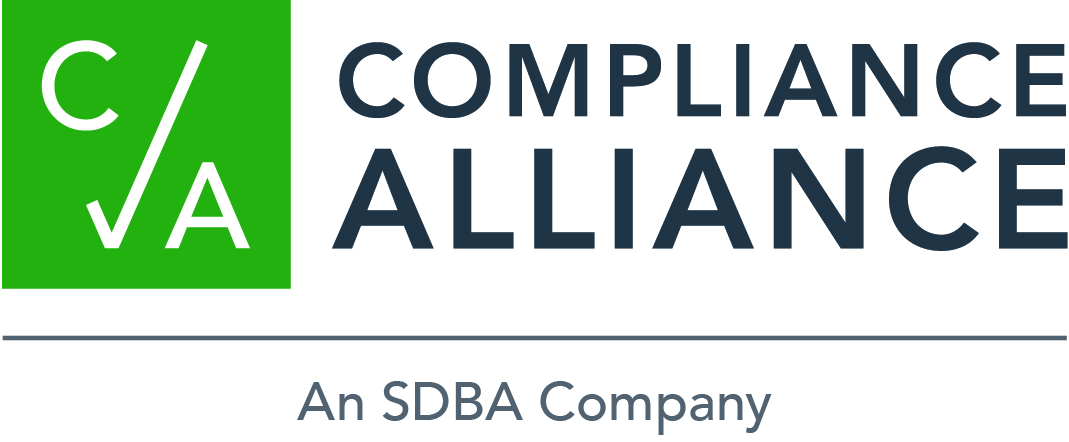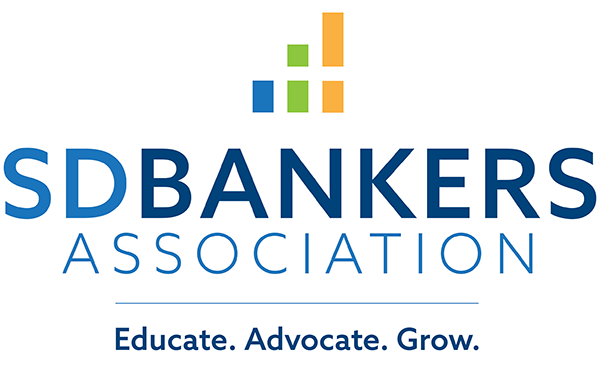New IT Regulatory Exam Procedures Webinar
On June 30, 2016, the one-year anniversary of the FFIEC Cybersecurity Assessment Tool, the long-awaited FDIC InTREx examination program, was released with FDIC FIL 43-2016.
The new InTREx Information Technology (IT) Risk Examination program is a complete overhaul of the previous IT Officers Questionnaire and examination procedures. It incorporates the FDIC’s own twist on cybersecurity assessments and has integrated everything cyber and IT into one process. There are also brand new processes for the examinations, reporting and scoring.
The Graduate School of Banking at the University of Wisconsin-Madison is offering the webinar "New IT Regulatory Exam Procedures" on Tuesday, July 26, at 10 a.m. CDT. Presenter Chad Knutson, Secure Banking Solutions, will expand on the requirements of the new IT exam program and provide details on the changes in the overall process, such as the introduction of the Uniform Rating System for Information Technology (URSIT) rating system.
Learn more and register.
Fostering Financial Inclusion Among the Rising Tide of New Account Fraud
Join Aite Group, American Banker and Early Warning (which powers Deluxe Detect) for a free webinar on on Tuesday, July 26, at 12 noon CDT to delve deeper into the rising tide of application fraud.
Points of discussion during the "Fostering Financial Inclusion Among the Rising Tide of New Account Fraud" will include the reasons for the shift from counterfeit card fraud to new account fraud; the need for financial institutions’ online account opening to be accompanied by stronger digital identity assessments; and new means available to authenticate a user and verify data presented by applicants.
Learn more and register.

Question of the Week
Closing costs question for Section B of the closing disclosure. Borrower pre pays $425 for appraisal. Appraisal comes in, but the actual cost is $400. We are currently showing a -25 in borrower paid at closing and $425 in before closing. Is that correct?
Answer: Yes, in fact you have a two options in this situation as provided in the April 2016 CFPB webinar. 1.) Do it as you do above. Show the $425 paid before closing for the appraisal and a -$25 paid at closing, or 2.) Show the appraisal as $400 paid before closing, then show the extra $25 as applied to another closing cost as paid before closing.
Not a Compliance Alliance member? Learn more about membership with Compliance Alliance by attending one of our live demos:
Compliance rules and regulations change quickly. For timely compliance updates, subscribe to Compliance Alliance’s email newsletters.
Compliance Alliance offers a comprehensive suite of compliance management solutions. To learn how to put them to work for your bank, call 888.353.3933 or email.
Upcoming Events
View all SDBA events
Sponsorship Opportunity
Learn more about sponsoring the SDBA eNews.
Questions/Comments
Contact Alisa DeMers, SDBA, at 800. 726.7322 or via email.
|
Senators Urge Tailored Regulations for Community, Regional Banks
A bipartisan group of 70 senators, including Sen. Mike Rounds (R-S.D.) wrote to the Consumer Financial Protection Bureau on Monday, calling on the agency to exempt community banks and credit unions from certain regulations. Led by Senate Banking Committee members Joe Donnelly (D-Ind.) and Ben Sasse (R-Neb.), the letter cited a provision of the Dodd-Frank Act allowing the bureau to adapt regulations by exempting “any class” of entity from its rulemakings.
“We agree that it is important for consumers to be empowered to take more control over their economic lives and that bad actors should be rooted out of the financial marketplace,” the letter said. “However, the CFPB must also consider its impact on community-based depository lenders, who are essential to spurring economic growth and prosperity at a local level and not disrupt the good work of community lenders to help someone start a business, buy a home or car, or put their kids through college.”
Meanwhile, four Democratic senators--Mark Warner (Va.), Gary Peters (Mich.), Bob Casey (Pa.) and Tim Kaine (Va.)--wrote on Tuesday to the federal banking agencies urging them to revisit Basel III liquidity and capital requirements for regional banks. While they noted that Basel III does differentiate supervision for large banks, "this distinction is applied unevenly across different institutions despite similar risk profiles, simply by virtue of an asset threshold."
The senators urged the agencies to review the reporting period for the Liquidity Coverage Ratio for regional banks and to revisit the advanced approaches risk-based capital regime, which has not been fully reviewed since the implementation of post-crisis reforms in the U.S.
"I am encouraged by this bipartisan show of support for better tailoring our regulatory architecture based on a variety of metrics--not just asset size," said ABA President and CEO Rob Nichols. "Ill-tailored rules are artificial barriers to growth, hurting our economy and our nation's bank customers." Read the letter on community banks. Read the letter on regional banks.
Rep. Heck Urges Bankers to Focus on Achievable Regulatory Reform
Bankers need to clearly outline the problems they face with outdated and ill-suited regulations and focus on what can be realistically achieved, Rep. Denny Heck (D-Wash.) told bankers at ABA’s Summer Leadership Meeting in Seattle on Monday.
To help with the effort he described as “regulatory modernization,” Heck urged bankers to “lay out the problem statement without putting a particular solution on the table. If you want someone to be receptive to a solution, you’d better get them to buy into the problem statement first.” He pointed to examples such as the Currency Transaction Report, noting that its $10,000 threshold “was set 40 years ago and never indexed for inflation. The question is: does it serve a constructive purpose?”
“Regulatory compliance costs for a lot of banks are the difference between decent profitability and viability,” added Heck, a member of the House Financial Services Committee. “There are often compliance requirements that are disconnected from what is necessary for consumer protection and safety and soundness.”
Focusing on realistic reforms, Heck warned against efforts to change the structure of the Consumer Financial Protection Bureau--which he described as a non-starter--“is the same league as leaving the landing lights on for Amelia Earhart,” he said. “It isn’t going to happen.”
He urged bankers to make efforts instead in areas where they can make a difference--for example, the CFPB’s efforts to collect data on small business loans. “I’m very worried about this,” he said. “I think business loans are way more complex and require significantly more judgment… I am inviting you all to please get involved early and make your viewpoint known to the CFPB.”
ABA Runs Digital, Social Media Ads Promoting Banking
ABA this week has been running a targeted digital and social media ad campaign aimed at raising awareness of the important role banks play in their communities and in the nation’s economy. All ads, which are aimed at opinion leaders and policy makers, direct their audience to aba.com/AmericasBanks, a new website that features impressive statistics about banking’s impact.
Social media ads and posts will run on Twitter, Facebook, LinkedIn and Instagram and will be accompanied by the hashtag #AmericasBanks. ABA encourages bankers who use social media to join the conversation by retweeting, reposting and liking ABA’s posts and by sharing their own positive stories of banking using the same hashtag.
Follow ABA on the following accounts:
Nichols: Glass-Steagall Would Not Have Prevented Financial Crisis
As the Republican national convention commenced in Cleveland on Monday, ABA President and CEO Rob Nichols responded to news that the GOP’s platform includes a call to bring back Glass-Steagall, a Depression-era law that separated depository and investment banking. Glass-Steagall was repealed in 1999, and critics of the financial industry have often pointed to the law’s removal as an underlying cause of the financial crisis, an assertion which Nichols refuted.
“Unlike in many parts of the world, America’s banking industry is well poised to fuel strong economic growth and job creation. Policymakers should encourage that instead of calling for a return to Depression-era regulation that would restrain banks’ ability to drive our economy forward. All of our bank regulatory agencies have agreed that Glass-Steagall would not have prevented the crisis or the housing market collapse,” Nichols said. “America’s economy depends on banks of all sizes to meet the needs of a large and diverse group of clients, customers and communities.” Read more.
FinCEN Issues FAQs on Customer Due Diligence Rule
To help bankers understand their obligations under the recent customer due diligence rule, FinCEN on Tuesday issued an FAQ document to provide greater clarity on the rule’s scope and application.
The rule requires banks to collect information on beneficial owners when an account is opened. A beneficial owner is an individual who owns more than 25 percent of the equity interests in a company or is the single individual who exercises control.
Covered institutions have until May 11, 2018 to be compliant with the rule.
Article Highlights How a Bank Brought 'Pokemon Go' to the Branch
With the dramatic and rapid rise of the Pokemon Go mobile game, a new article on ABA Bank Marketing explores how one community bank is attempting to capitalize on the game’s popularity.
Launched on July 5, Pokemon Go now has 21 million active daily users and continues to grow rapidly, surpassing Candy Crush as the most popular mobile game in U.S. history. By accessing a phone’s camera, Pokemon Go displays Pokemon characters in real-life locations; players earn points by nabbing the characters that appear.
Chris Nichols, chief strategy officer at the Winter Haven, Fla.-based CenterState Bank, described in the article how his bank placed “lures” in two of their branches. The lures generate Pokemon characters in those locations, bringing foot traffic as players attempt to capture the characters.
At a cost of $5.67 each and lasting for 30 minutes, the lures are an inexpensive way to draw branch traffic at off-peak times, Nichols wrote, adding that banks can offer giveaways or promotions to convert traffic to product sales. He also described how to navigate the risk management process and how to offer social media marketing ideas and tie-ins.
“The most important takeaway here is teaching your bank to react to the ever increasing pace of change,” Nichols wrote. “As a community bank, we had previously discussed our process, and when we put the idea of purchasing lures into action, we were able to get approval within hours instead of months. That muscle memory of an innovative process is important and mandatory going forward.” Read the article.
|
|


